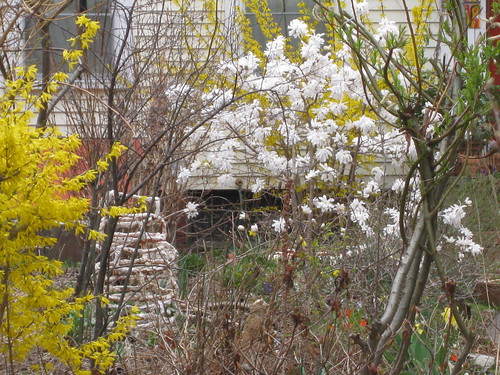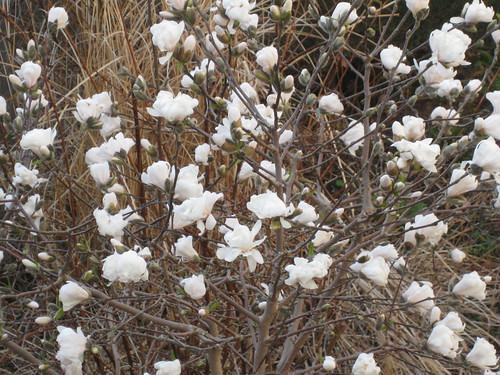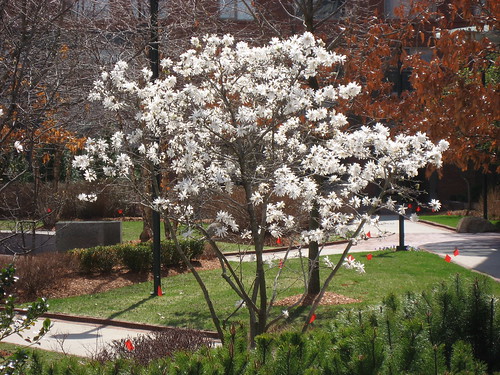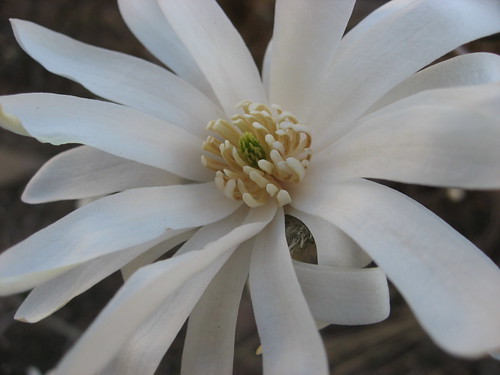
I'm curious about the visual and olafactory presence of this wonderful plant. Before the leaves emerge we perceive it as an orb of aromatic white blossoms. They shine in the daylight sun and at night, as they close, they seem to radiate a gentle light. Their aroma is heavenly, perhaps the most memorable smell of spring. The graceful branches seem to dance with floppy-edged stars. The magnolia seems to be here for the sole purpose of decorating our lives. Within this aesthetic universe there are suggestions of questions we might ask as we inhale the early springtime pleasure.
What is the surface topology of the shrub? Is it a pure sphere or slightly flattened? How does the surface arrangement reflect the internal placement of blossoms? The flowers are spaced in a way that we perceive as aesthetically pleasing, but might their placement provide selective advantage for this plant? Might the internal (and external) universe of magnolia blossoms enhance pollination? Aroma production? Visibility? Or are all of these questions moot? Perhaps the magnolia spreads at our pleasure, its superb features a kind of symbiosis with the world of gardeners.
As scientists we look at the world a little differently from our neighbors. We see things that are visually pleasing and we ask what's underneath our feelings of delight. We wonder about the aesthetics of evolution, trying to imagine the perceptions of a bee or the circulation of a breeze. We look inward at ourselves with curiosity as we wonder about the mechanisms of wonder.



No comments:
Post a Comment